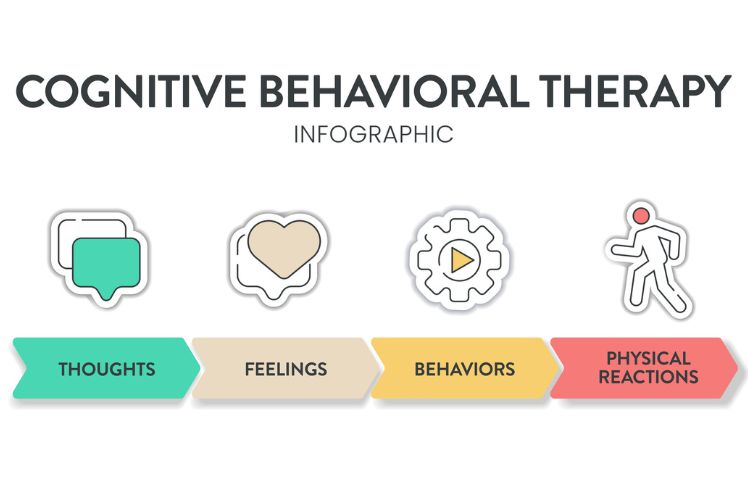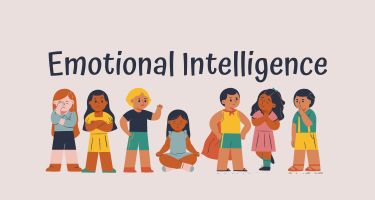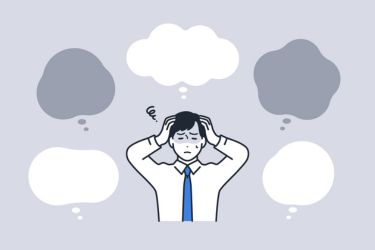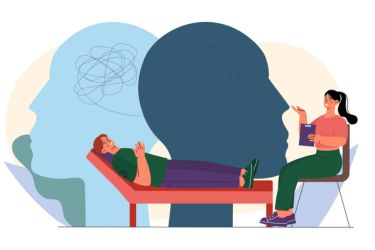Cognitive Behavioural Therapy (CBT) is a powerful tool we can use to tackle mental health challenges. This therapy helps individuals understand and reshape their thoughts and behaviours, making it particularly effective for issues like anxiety and depression. By focusing on changing unhelpful patterns, CBT empowers us to take control of our mental well-being.
As we explore CBT, we will uncover how it works, its key techniques, and how it can be applied to everyday life. With a focus on practical strategies, CBT not only seeks to alleviate immediate concerns but also promotes lasting personal growth. Understanding the therapeutic relationship within this framework is crucial for both therapists and clients, as it lays the foundation for effective treatment.
In this blog post, we aim to provide insights into the various aspects of CBT and why it is a relevant approach for anyone looking to improve their mental health. We will guide you through the essential elements of this therapy, enriching our collective understanding of its benefits.
Key Takeaways
- CBT helps reframe negative thoughts and behaviours.
- It is effective for conditions like anxiety and depression.
- Understanding its techniques can promote personal growth.
The Basics of CBT
Cognitive Behavioural Therapy (CBT) focuses on the connections between our thoughts, feelings, and behaviours. By understanding these links, we can better manage our mental health and address various issues.
Key Principles of Cognitive Behavioural Therapy
CBT is built on several core principles. First, we learn that our thoughts directly influence our feelings and behaviours. This means that changing negative thought patterns can lead to positive changes in our emotions and actions.
Additionally, CBT is structured and goal-oriented. Sessions often involve setting specific goals and using techniques to achieve them.
We also understand that CBT is evidence-based. This means that many of its methods are supported by research. This gives us confidence in its effectiveness for issues such as anxiety and depression.
History and Development of CBT
The development of CBT began in the 1950s. Albert Ellis introduced Rational Emotive Behaviour Therapy (REBT), laying the groundwork for what would become CBT.
In the 1960s, Aaron T. Beck developed Cognitive Therapy, which focused on identifying and changing harmful thoughts.
Over time, these approaches merged into what we now know as cognitive behavioural therapy. This integration has made CBT a versatile tool used worldwide by therapists to treat a variety of mental health issues. The ongoing research continues to refine and improve CBT techniques, ensuring its relevance in modern therapy.
Understanding the CBT Framework
Cognitive Behavioural Therapy (CBT) is built upon a solid framework that helps us identify and modify negative thought patterns, which can lead to unhelpful behaviours and emotions. Understanding this framework is essential for effectively using CBT to improve mental health.
Cognitive Processes and Behaviours
In CBT, we focus on how our thoughts influence our feelings and behaviours. This is often represented by the "cognitive triangle," which consists of thoughts, emotions, and behaviours. When we encounter a situation, our thoughts shape how we feel and how we respond.
Negative thought patterns can lead to distress. For instance, if we think, "I always fail," we may feel anxious and avoid challenges. By recognising these patterns, we can interrupt the cycle. We learn to replace unhelpful thoughts with more balanced and helpful ones. This helps us to respond more positively to life’s challenges.
Identification of Unhelpful Thoughts
A key part of CBT is identifying unhelpful thoughts. These can be automatic, often arising without our awareness. Common examples include catastrophic thinking or all-or-nothing beliefs.
We can start by keeping a thought diary. This helps us track situations that trigger negative thoughts. By examining these entries, we can see patterns that emerge. Once we identify these thoughts, we can challenge their validity and replace them with more constructive alternatives.
This identification process empowers us to take control of our thinking, leading to more positive feelings and behaviours.
The Role of Emotions in CBT
Emotions play a crucial role in CBT. Our feelings often stem from our thoughts, and understanding this connection is vital for change. For example, when we experience sadness, it is typically linked to negative thinking.
In CBT, we learn to evaluate our emotional responses. By understanding what triggers our feelings, we can work to change our thoughts. This may involve asking ourselves questions like, "Is this thought based on facts?" or "What evidence do I have for and against this thought?"
By processing our emotions alongside our thoughts and behaviours, we create a comprehensive approach to mental well-being that can significantly improve our quality of life.
Clinical Applications of CBT
Cognitive Behavioural Therapy (CBT) is effective for a range of mental health problems. We will explore its applications in anxiety disorders, depression, and other mental health issues.
CBT for Anxiety Disorders
CBT is widely used to treat various anxiety disorders, including panic disorder, phobias, and obsessive-compulsive disorder (OCD). The therapy helps us identify and challenge unhelpful thoughts that contribute to anxiety.
Through exposure techniques, we gradually face our fears and learn coping strategies. For instance, in treating phobias, we might be exposed to the fear source in a controlled manner. This process helps reduce the fear response over time. Studies show that CBT can significantly decrease symptoms of anxiety, making it a preferred choice for many.
CBT for Depression
For individuals struggling with depression, CBT focuses on changing negative thought patterns. We work together to identify distorted beliefs and replace them with more positive, realistic ones. This method can help alleviate feelings of hopelessness and improve mood.
Behavioural activation is another key component. By engaging in enjoyable activities, we can break the cycle of withdrawal and inactivity that often accompanies depression. Research indicates that CBT significantly reduces depressive symptoms and aids in preventing relapse.
CBT and Other Mental Health Issues
CBT is versatile and can effectively address other mental health issues, such as post-traumatic stress disorder (PTSD), eating disorders, and bipolar disorder. We use tailored strategies to meet the unique needs of each condition.
For example, in treating PTSD, we incorporate techniques like trauma-focused CBT to process traumatic memories safely. In eating disorders, we help challenge distorted body images and unhealthy behaviours. The adaptability of CBT makes it beneficial for those with personality disorders and psychosis as well. It provides tools to manage symptoms while promoting overall mental well-being.
CBT Techniques and Strategies
In our exploration of Cognitive Behavioural Therapy (CBT), we will look closely at techniques that help us challenge negative thinking and develop effective coping skills. Each method aims to promote better mental health by reshaping how we think and behave.
Common CBT Exercises
Common exercises in CBT focus on identifying and altering negative thought patterns. One widely used method is the thought record, which helps us track thoughts, feelings, and situations. By recording these, we gain insights into how our thoughts influence our emotions and behaviours.
Another effective exercise is activity scheduling. We plan enjoyable or meaningful activities to counteract feelings of sadness or anxiety. By engaging in these activities, we can improve our mood and motivation.
Finally, problem-solving techniques can assist in addressing specific issues we face. These processes involve identifying problems, generating solutions, and evaluating them to choose the best course of action.
Cognitive Restructuring
Cognitive restructuring is a key aspect of CBT that aims to change our negative thinking patterns. We examine irrational beliefs and assess their validity. This involves identifying cognitive distortions such as catastrophising or overgeneralising.
Once we identify these distortions, we can challenge them. For instance, if we believe that we will always fail, we can look for evidence that counters this belief. By reframing our thoughts, we can see situations more realistically.
This method can help us to develop rational emotive behaviour therapy (REBT) skills, which focus on altering our emotional responses by changing our thinking. Ultimately, cognitive restructuring aims to replace harmful thoughts with more balanced and rational ones.
Behavioural Activation
Behavioural activation encourages us to engage in behaviours that boost our mood. We start by identifying activities that we once enjoyed or that provide a sense of purpose. By gradually reintroducing these activities, we can combat feelings of apathy and sadness.
We also track our engagement with these activities alongside our mood changes. This helps us recognise the connection between actions and feelings, reinforcing the idea that positive behaviour can lead to positive emotions.
Moreover, this technique encourages us to set realistic and achievable goals. We can break tasks into smaller steps, making it easier to experience success and satisfaction.
Exposure Therapy
Exposure therapy involves gradually exposing ourselves to situations we find anxiety-provoking. This technique helps us confront our fears in a controlled manner, ultimately reducing our anxiety over time.
We start with graded exposure, which means we face less threatening situations first. As we become more comfortable, we progress to more challenging scenarios. This method helps desensitise us to the fear and builds our confidence.
In our therapy sessions, we learn coping strategies to manage anxiety during exposure. Techniques such as deep breathing and mindfulness can support us as we face our fears, making the process more effective and less overwhelming.
CBT in Personal Development
Cognitive Behavioural Therapy (CBT) plays a significant role in personal development by helping us manage our thoughts and behaviours. We can utilise CBT to tackle negative thoughts and work towards positive change. This section explores how we can use self-help methods and apply CBT techniques effectively.
Self-Help and Daily Practice
We can incorporate CBT into our daily lives through simple self-help strategies. Keeping a diary can be incredibly valuable. By writing down our current problems and feelings, we gain insight into our thoughts that contribute to negative patterns.
Additionally, we can challenge these negative thoughts by questioning their validity. For instance, if we think, “I will never succeed,” we can replace this with a more realistic thought, like “I have succeeded before and I can again.”
Self-help books on CBT can also guide us in learning new techniques. These resources often provide exercises and practical steps that we can apply in our daily lives. Adding activities like mindfulness can enhance our emotional well-being and help us stay grounded.
Utilising CBT Techniques Without a Therapist
We can utilise CBT techniques independently, even without a therapist. One effective method is cognitive restructuring. This involves identifying negative thought patterns and reframing them into positive and realistic ones.
For example, when we encounter a setback, instead of thinking, "I failed," we might reframe it to, "I encountered a challenge that I can learn from." This shift in perspective helps reduce feelings of helplessness.
We can also set specific, measurable goals in our personal development journey. Tracking our progress provides motivation and reinforces positive behaviour. With practice and dedication, we can make meaningful changes in our lives using CBT techniques.
The Therapeutic Relationship in CBT
In Cognitive Behavioural Therapy (CBT), the therapeutic relationship is vital for achieving successful outcomes. It encompasses the connection between therapist and client, focusing on trust, collaboration, and open communication.
The Role of the Therapist
The therapist plays a crucial role in establishing a supportive environment. They must exhibit warmth, empathy, and genuine concern. This connection fosters a safe space where clients feel comfortable sharing their thoughts and feelings.
A strong therapeutic alliance allows us to effectively challenge negative thought patterns. The therapist's ability to listen actively and respond thoughtfully encourages clients to engage fully in the therapeutic process. Techniques used by therapists, like reflective listening, enhance this relationship.
Additionally, adapting their approach based on individual client needs is essential. This flexibility helps clients feel understood and valued, reinforcing their willingness to participate in therapy.
Collaboration and Feedback
Collaboration is at the heart of the CBT process. We view therapy as a partnership where both the therapist and client contribute to treatment goals. This teamwork promotes a sense of ownership over the therapeutic journey.
Regular feedback is essential for this collaboration. We encourage clients to share their thoughts about the therapy process, including what is working and what isn't. This input allows us to adjust our strategies as needed.
Moreover, building a collaborative relationship fosters accountability. Clients are more likely to apply the skills learned in therapy when they feel supported and involved. This engagement enhances the effectiveness of CBT and leads to positive outcomes.
CBT Delivery Formats
Cognitive Behavioural Therapy (CBT) can be delivered through various formats that cater to different needs and preferences. We can explore two main delivery methods: in-person therapy sessions and online CBT via digital platforms. Each method has unique features that can affect the treatment experience and outcome.
In-person Therapy Sessions
In-person therapy sessions involve face-to-face interactions between a therapist and a client. These sessions typically take place in a clinical setting and allow for direct communication. We benefit from non-verbal cues such as body language and tone of voice, which can enhance understanding.
Sessions usually last between 45 to 60 minutes and may occur weekly or bi-weekly, depending on individual needs. Many clients find this traditional format provides a sense of accountability and connection, which can improve engagement in the therapeutic process.
In-person therapy is particularly helpful for complex cases requiring close observation and immediate feedback. Additionally, having a structured routine of attending sessions can help reinforce the commitment to therapy.
Online CBT and Digital Platforms
Online CBT offers flexibility and convenience for individuals seeking therapy. We can access therapy through various digital platforms, such as video calls, apps, or chat services. This method can be particularly appealing for those with busy schedules or who have difficulty attending in-person sessions.
Digital platforms often allow us to choose between guided self-help programs and live sessions with therapists. Many online programs focus on specific issues, such as anxiety or depression, making it easier for us to find the right help.
Research shows that online CBT can be as effective as traditional methods. The accessibility of online therapy also means that we can seek help from qualified therapists regardless of location, breaking down geographical barriers.
Frequently Asked Questions
In this section, we will provide clear answers to common questions about Cognitive Behavioural Therapy (CBT). These questions cover its practice, techniques, session expectations, effective exercises, access to services, and training pathways.
How is cognitive behavioural therapy practised?
CBT is generally practised in individual or group settings. Therapists guide clients in identifying negative thought patterns and behaviours. This process helps us learn how to change these patterns to improve emotional well-being.
What techniques are utilised in cognitive behavioural therapy?
Several techniques form the core of CBT. These include cognitive restructuring, exposure therapy, and thought records. Each of these techniques aims to challenge negative thoughts and encourage healthier thinking patterns.
What can one expect from cognitive behavioural therapy sessions?
In our sessions, we can expect to engage in discussions about thoughts, feelings, and behaviours. The therapist may assign homework to reinforce what we learn in sessions. This approach helps to solidify new skills for managing everyday challenges.
What constitutes an effective cognitive behavioural therapy exercise?
An effective CBT exercise should be relevant to our specific issues. It often involves practising new skills in real-life situations. Regular reflection on our progress enhances the effectiveness of these exercises.
How can one access cognitive behavioural therapy services?
We can access CBT services through various channels. NHS providers often offer free or low-cost sessions. Private therapists are also available for those seeking quicker access or specialised treatment.
In what ways can cognitive behavioural therapy training be obtained?
Training in CBT can be obtained through accredited programmes offered by universities or professional organisations. Workshops and online courses are also available to enhance our understanding. Gaining experience through supervised practice is essential for effective training.





















